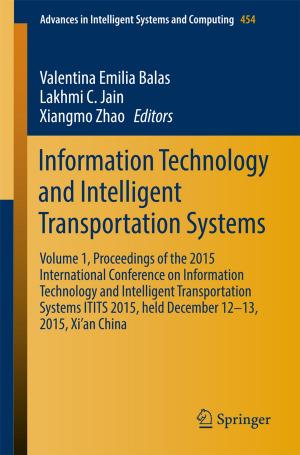Enterprise Interoperability VII
Enterprise Interoperability in the Digitized and Networked Factory of the Future
Nonfiction, Science & Nature, Technology, Telecommunications, Business & Finance, Industries & Professions, Information Management| Author: | ISBN: | 9783319309576 | |
| Publisher: | Springer International Publishing | Publication: | October 18, 2016 |
| Imprint: | Springer | Language: | English |
| Author: | |
| ISBN: | 9783319309576 |
| Publisher: | Springer International Publishing |
| Publication: | October 18, 2016 |
| Imprint: | Springer |
| Language: | English |
A concise reference to the state of the art in systems interoperability, Enterprise Interoperability VII will be of great value to engineers and computer scientists working in manufacturing and other process industries and to software engineers and electronic and manufacturing engineers working in the academic environment. Furthermore, it shows how knowledge of the meaning within information and the use to which it will be put have to be held in common between enterprises for consistent and efficient inter-enterprise networks.
Over 30 papers, ranging from academic research through case studies to industrial and administrative experience of interoperability show how, in a scenario of globalised markets, where the capacity to cooperate with other organizations efficiently is essential in order to remain economically, socially and environmentally cost-effective, the most innovative digitized and networked enterprises ensure that their systems and applications are able to interoperate across heterogeneous collaborative networks of independent organizations. This goal of interoperability is essential, not only from the perspective of the individual enterprise but also in the business structures that are now emerging, such as complex collaborating networks of suppliers and customers, virtual enterprises, interconnected organisations or extended enterprises, as well as in mergers and acquisitions. Establishing efficient and relevant collaborative situations requires the management of interoperability from a dynamic point of view: a relevant and efficient collaboration of organizations may require adaptation to remain in line with changing objectives, evolving resources, unexpected events, etc. Many of the papers contained in this, the eighth volume of Proceedings of the I-ESA Conferences have examples and illustrations calculated to deepen understanding and generate new ideas.
The I-ESA’16 Conference from which this book is drawn was organized by the Escola de Engenharia da Universidade do Minho, on behalf of the European Virtual Laboratory for Enterprise Interoperability (INTEROP-VLab) and Interop VLab Portuguese Pole.
A concise reference to the state of the art in systems interoperability, Enterprise Interoperability VII will be of great value to engineers and computer scientists working in manufacturing and other process industries and to software engineers and electronic and manufacturing engineers working in the academic environment. Furthermore, it shows how knowledge of the meaning within information and the use to which it will be put have to be held in common between enterprises for consistent and efficient inter-enterprise networks.
Over 30 papers, ranging from academic research through case studies to industrial and administrative experience of interoperability show how, in a scenario of globalised markets, where the capacity to cooperate with other organizations efficiently is essential in order to remain economically, socially and environmentally cost-effective, the most innovative digitized and networked enterprises ensure that their systems and applications are able to interoperate across heterogeneous collaborative networks of independent organizations. This goal of interoperability is essential, not only from the perspective of the individual enterprise but also in the business structures that are now emerging, such as complex collaborating networks of suppliers and customers, virtual enterprises, interconnected organisations or extended enterprises, as well as in mergers and acquisitions. Establishing efficient and relevant collaborative situations requires the management of interoperability from a dynamic point of view: a relevant and efficient collaboration of organizations may require adaptation to remain in line with changing objectives, evolving resources, unexpected events, etc. Many of the papers contained in this, the eighth volume of Proceedings of the I-ESA Conferences have examples and illustrations calculated to deepen understanding and generate new ideas.
The I-ESA’16 Conference from which this book is drawn was organized by the Escola de Engenharia da Universidade do Minho, on behalf of the European Virtual Laboratory for Enterprise Interoperability (INTEROP-VLab) and Interop VLab Portuguese Pole.















